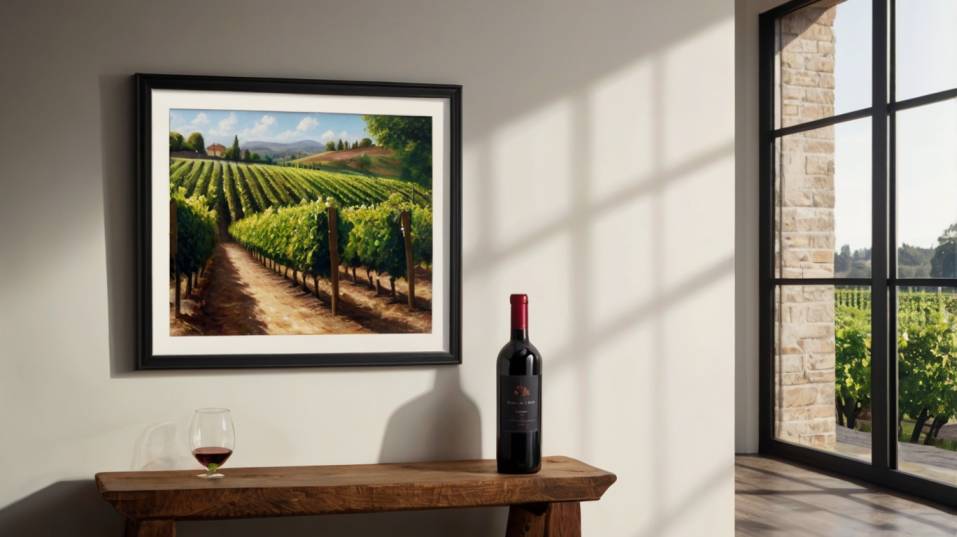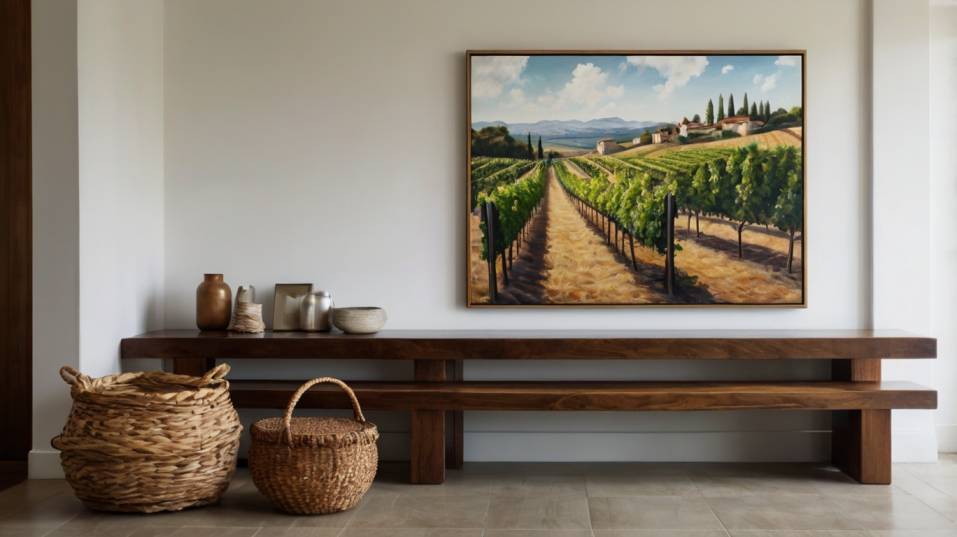Wine in Art: What Paintings Reveal
Discover how wine in art reveals its meaning, mood, and message—and how looking closer can sharpen your tasting instincts and rituals.

What if seeing wine could help you taste it better? Not in the glass—but on canvas. For centuries, artists have used wine to express celebration, solitude, power, ritual.
For anyone early in their wine journey, looking at how wine appears in art can sharpen your eye, deepen your instincts, and give every bottle more meaning.
It’s not about expertise—it’s about attention. And the more you see, the more you sense what wine really holds.
Art Teaches You to Look Before You Taste
Start with a still life: a goblet half-full, a cluster of grapes, a lemon peeled just enough to curl at the edge. Dutch Golden Age painters didn’t just show off technical skill—they told you something about attention.
Every detail was deliberate: the glint of light on a glass, the condensation on a bottle, the richness of a tablecloth.
When you look at wine this way—in paint, not just in hand—you learn to pause. To observe before reacting. That habit translates directly into better tasting. Take a second to watch how the wine moves in the glass.
Check its clarity, color, viscosity. Notice how it catches the light. These aren’t superficial details—they hint at structure, weight, and style. The more you see, the more you start noticing the invisible.
The Scene Around the Wine Is the Key
Wine rarely appears alone in art. It’s part of a bigger moment. Bacchus is surrounded by revelers. A monk sits quietly beside a flask.
A Parisian barmaid waits at her counter, distant and unreadable. These scenes reveal the setting, the purpose, the mood—and if you pay attention, they help you build your own rituals.

Context Shapes the Experience
Good wine always fits its context. That doesn’t mean you need a fresco-worthy table to enjoy it. But it does mean understanding that temperature, light, food, and company all affect how a wine speaks.
Artists have always known this. They’ve painted the haze of long lunches, the romance of twilight drinks, the energy of crowded banquets. You don’t need to recreate the scene, but you can learn from its balance.
When you choose wine, think like a painter: what feeling are you aiming for? Bright and crisp for a sunlit afternoon? Dark and earthy for late conversation? Context shapes perception. In wine, that’s everything.
Style and Symbol Give You a Language
Throughout art history, wine has stood for more than itself. In Renaissance altarpieces, it’s divine. In Baroque indulgence scenes, it’s mortal pleasure.
In 19th-century French realism, it’s working-class honesty. These meanings weren’t accidental. They gave viewers cues—ways to read the moment and the people in it.
Emotional Language, Not Just Flavor Notes
You can use that same approach when learning to describe what you taste. You don’t need to rely on long lists of flavor notes. Instead, focus on character.
Is this wine meditative? Lively? Bold? Quiet? That emotional language—drawn from what you feel, not just what you detect—comes easier when you’ve seen how art handles those ideas.
This helps when talking about wine too. It’s easy to get caught up in jargon or chase the “right” terms. But confidence comes from connecting wine to something familiar, not memorized.
A painting gives you visual metaphors to work with: texture, tension, softness, contrast. Use those, and you’ll communicate with more clarity, and more ease.
How Art Reveals the Role of Wine Over Time
One of the clearest takeaways from looking at wine in art is how its role shifts across centuries—but always holds weight. In ancient mosaics, wine is power and abundance.
In religious works, it’s mystery and sacrifice. In Impressionist cafés, it becomes casual and urban. Each shift reflects how people used and thought about wine—and where it sat in daily life.
From Status to Intimacy to Everyday Life
Today, wine is widely available, yet often stripped of its deeper role. Art reminds you that wine meant something.
It marked moments, shaped gatherings, anchored values. That doesn’t mean every glass needs to be ceremonial—but being aware of that history gives your drinking habits more purpose.
It nudges you to build a sense of occasion, even in simple settings. To pour not just with taste, but with intent.
It also sharpens your ability to read cues in the modern world. Whether you're looking at a wine label, a restaurant list, or a photo on a wine blog—visuals matter. Style speaks.
And once you’ve studied how wine was once portrayed with symbolism and care, you’ll get better at spotting what today’s images are trying to tell you.
Final Thoughts: Look Closer, Taste Better
Wine and art have always shared one essential trait: both reward attention. Neither demands expertise at the start—but both get richer the more you engage.
When you study how artists have shown wine, you begin to see your own habits, choices, and preferences in a different light. You stop drinking just for flavor and start drinking with awareness.
So the next time you open a bottle, do more than pour. Pick a painting. Any painting where wine appears—grand or humble, classic or modern. Sit with it.
Ask yourself: What’s happening here? What mood does it evoke? What kind of wine belongs in this scene—and what does that say about the one in your glass?
Try this once, and you might find yourself tasting not just for flavor, but for feeling. That’s when wine stops being a beverage—and becomes something closer to art.




